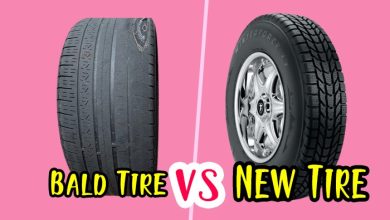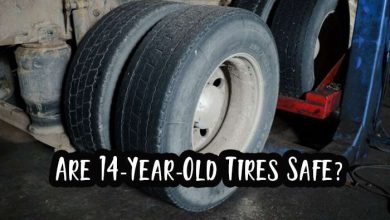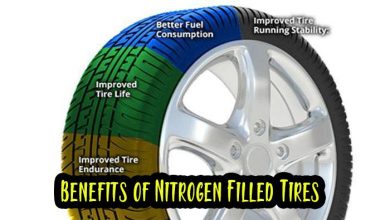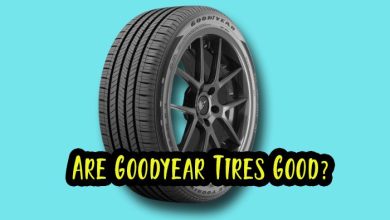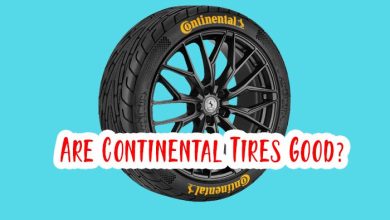Are Low Profile Tires Good in Snow? Expert Advice
In the world of automobiles, tires are often an overlooked component, yet they are crucial for safety and performance, especially when it comes to adverse weather conditions like snow. I’m here to illuminate the question of many car owners: Are low-profile tires good in snow?
As an experienced automobile engineer, I’ll walk you through the basics of low-profile tires, their challenges in snowy conditions, how to choose the right tires, and alternative solutions for winter driving. So, let’s hit the road and find out if low-profile tires are up to the task of tackling the white stuff.
Are Low Profile Tires Good in Snow? No, low profile tires are not good in snow. They have shorter sidewalls, which means they are less flexible and have less contact with the road surface.
The Basics of Low Profile Tires

Low profile tires are known for their sleek and stylish appearance, often on sporty or high-performance vehicles. They have a shorter sidewall and wider tread, offering better cornering and handling on dry, clear roads. These tires provide a more responsive and controlled ride, enhancing the overall driving experience.
Read Also: Are Tire Certificates Worth It?
While they excel in certain aspects, it’s essential to understand their limitations, particularly when it comes to snow. The main characteristic of low-profile tires is their reduced sidewall height.
This design choice means less rubber between the rim and the road, resulting in a stiffer tire. This stiffness is beneficial in dry conditions but can present several challenges in the snow.
Are Low Profile Tires Good in Snow?
The short answer is no; low profile tires are not the ideal choice for snow. Here’s why:
1. Reduced Traction
Snow-covered roads require excellent traction, and low profile tires struggle in this department. Their reduced sidewall height means less rubber is in contact with the road, which decreases the tire’s ability to grip slippery surfaces. When driving in snow, you want tires with deeper treads to bite into the snow and maintain traction.
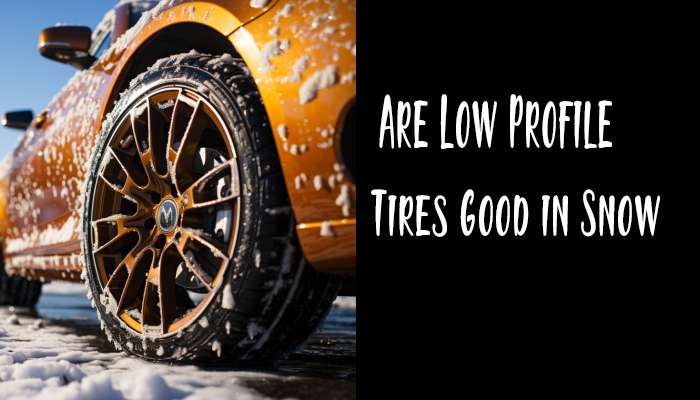
2. Harsh Ride
Low profile tires tend to have a harsher ride compared to standard tires. The stiff sidewalls transmit more of the road’s imperfections into the cabin, making the drive less comfortable. This harshness can become unpleasant in snowy conditions, where the road might be uneven or covered in snow and ice.
3. Vulnerability to Damage
Snow can hide all sorts of obstacles on the road, from potholes to debris. Low profile tires, due to their shorter sidewalls, are more susceptible to damage when encountering these obstacles. Hitting a hidden pothole can lead to a bent rim or a punctured tire, leaving you stranded in the snow.
4. Limited Clearance
Low profile tires provide less clearance between the rim and the road. This can lead to your vehicle getting stuck in deep snow, as there’s not enough space for the tires to plow through the snow effectively.
The Challenges of Low Profile Tires in Snow
To understand the challenges of low profile tires in the snow better, let’s break it down:
1. Traction Issues
Snow and ice require tires with deep, aggressive tread patterns to grip the road. Low profile tires, with their limited contact area, struggle to provide the necessary traction. This can result in reduced stability and increased sliding, a significant safety concern.
Related Post:
Are Mud Tires Good in Snow?
Are Off Road Tires Good for Snow?
Are Hankook Tires Good?
2. Reduced Comfort
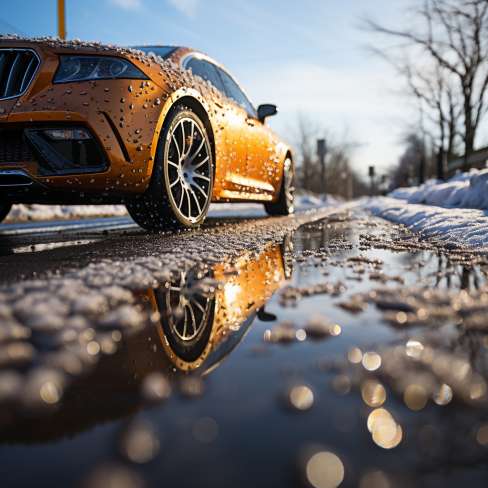
Low profile tires are known for their sporty, firm ride. In normal conditions, this may be an advantage. However, in the snow, where roads are bumpy and slippery, the lack of sidewall flex can make the ride uncomfortable and even jarring.
3. Vulnerability to Damage
Winter roads can be treacherous, hiding hazards like potholes and debris beneath the snow. Low profile tires’ reduced sidewall height makes them more susceptible to damage when encountering these obstacles, potentially leading to costly repairs.
4. Limited Snow Clearance
Low profile tires are more prone to getting stuck in deep snow due to their minimal clearance between the rim and the road surface. This can leave you stranded or struggling to move, especially in heavy snowfall.
Read More: Can a Tire Be Patched on the Side?
5. Poor Braking Performance
Effective braking is critical in snowy conditions. Low profile tires often struggle to provide the necessary grip for safe and efficient braking, increasing the risk of accidents.
Choosing the Right Low Profile Tires for Snow
If you live in an area with snowy winters and still prefer the look and performance of low profile tires, you can take specific steps to make them more suitable for winter driving:
1. Opt for Winter or All-Season Low Profile Tires
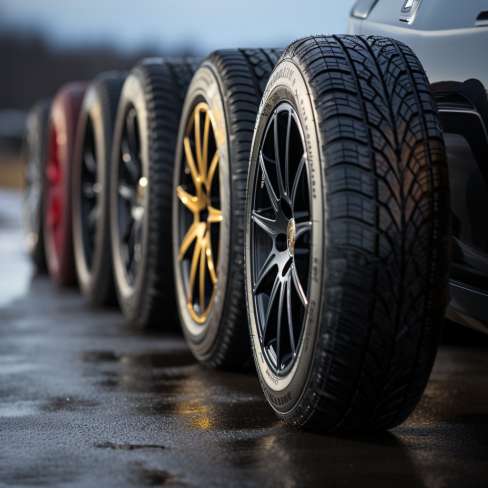
Look for low profile tires that are rated for winter or all-season use. These tires are designed with features to improve traction and handling on snow and ice. They may have sipes (small channels) in the tread and a rubber compound that remains flexible in cold temperatures.
2. Consider Downsizing
Another option is to downsize your low profile tires for the winter season. By choosing a narrower and taller tire, you can improve snow traction. Consult your vehicle’s manufacturer or a tire professional to determine the appropriate downsizing options.
3. Use Snow Chains or Traction Aids
In extreme winter conditions, you can enhance the traction of your low profile tires by using snow chains or other traction aids. These accessories provide additional grip on slippery surfaces and are essential for safe winter driving.
Alternative Solutions for Winter Driving
While low profile tires can be made more suitable for snow, some drivers opt for alternative solutions for winter driving:
1. Winter Tires
Consider investing in a set of dedicated winter tires. Winter tires are designed to excel in cold and snowy conditions. They have deep treads and a unique rubber compound that remains pliable in freezing temperatures. Swapping your low profile tires for winter tires during the snowy season can significantly improve your safety on the road.
2. All-Season Tires
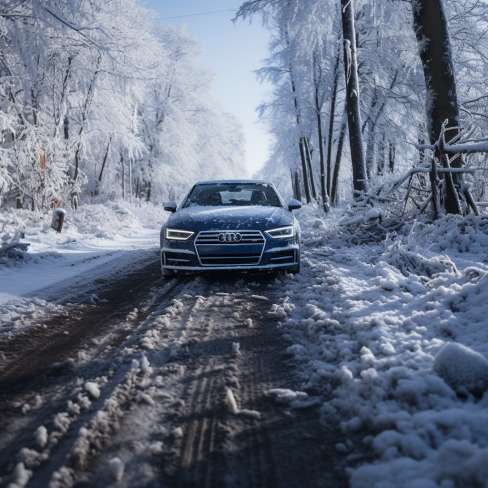
Choose high-quality all-season tires if you prefer the convenience of not changing tires seasonally. All-season tires are designed to perform reasonably well in various conditions, including light snow. While they may not match the performance of winter tires, they offer a balanced solution for year-round driving.
3. All-Wheel Drive (AWD) or Four-Wheel Drive (4WD) Vehicles
Consider driving a vehicle equipped with AWD or 4WD systems. These systems distribute power to all four wheels, enhancing traction on slippery surfaces. When combined with appropriate tires, AWD or 4WD can be an effective solution for winter driving.
Frequently Asked Questions (FAQs)
Do I need to change my low profile tires in winter?
Switching to winter or all-season tires is advisable if you live in an area with harsh winter conditions. These tires are designed to provide better traction and safety in cold and snowy weather.
What are the alternatives to low profile tires for snow?
If you’re concerned about low profile tires in snowy conditions, consider using dedicated winter tires or high-quality all-season tires. These options offer better performance and safety during the winter season.
How do I know if my low profile tires are suitable for winter?
Check your tire manufacturer’s recommendations and the tire’s specifications. Look for the M+S (Mud and Snow) or snowflake symbol on the sidewall, indicating that the tire is suitable for winter use.
What are the disadvantages of low profile tires?
Low profile tires may provide a sporty appearance and improved handling on dry roads, but they often result in a harsher ride, reduced comfort, and decreased performance in snowy or rough road conditions.
Are low profile tires better for traction?
Low profile tires are generally not better for traction in snowy or icy conditions when compared to dedicated winter tires or all-season tires. While some low profile tires are designed for winter use, they may still not perform as well as tires specifically engineered for cold weather.
Conclusion
In conclusion, the suitability of low profile tires for snow depends on various factors, including tire type, tread design, and personal preferences. While some low profile tires can be adapted for winter use, they may not provide the same traction and safety as dedicated winter tires.
If you live in an area with harsh winters, it’s wise to consider alternative tire options to ensure your safety on the road.
Resources
For more information on tire selection and winter driving safety, check out the following resources:
